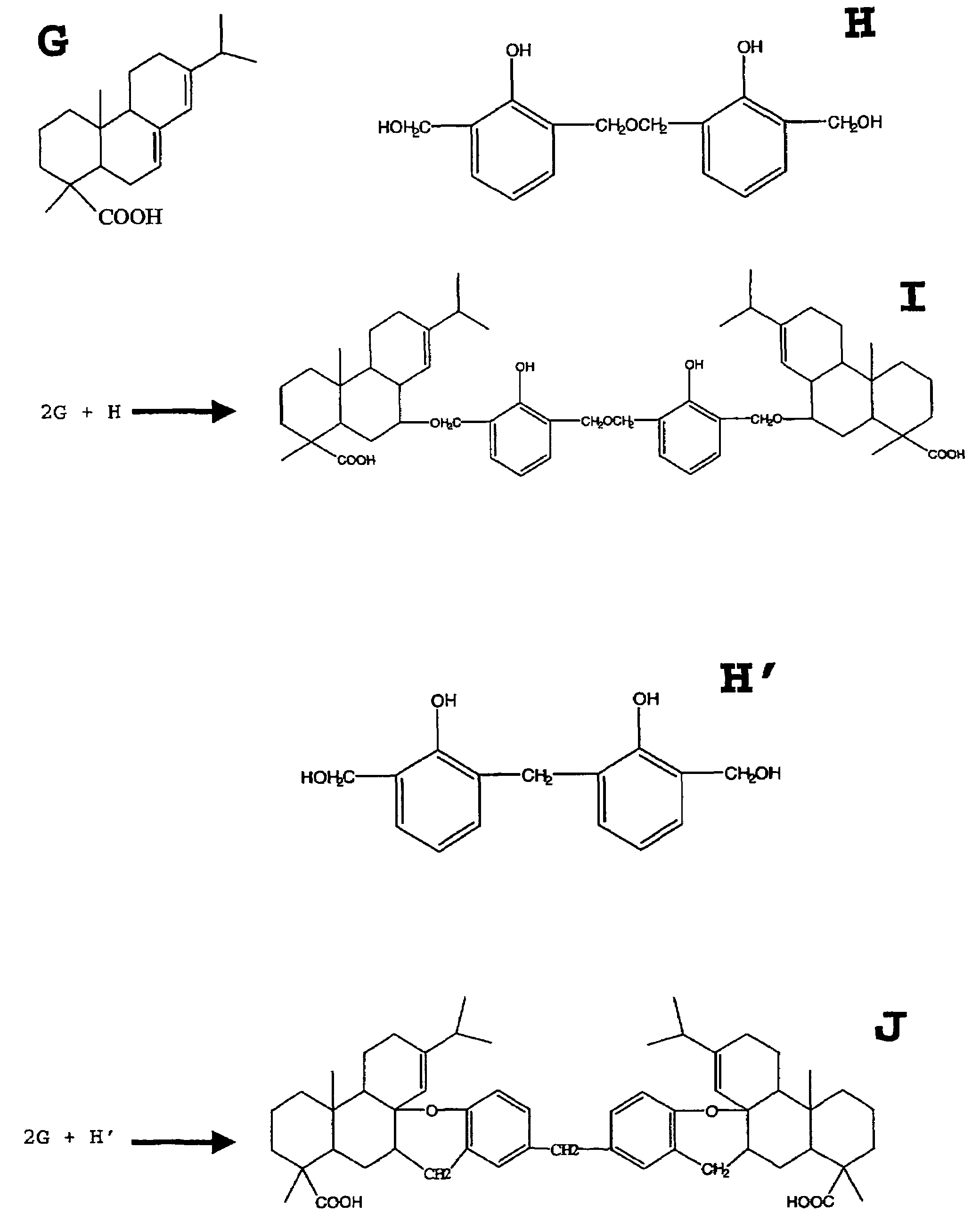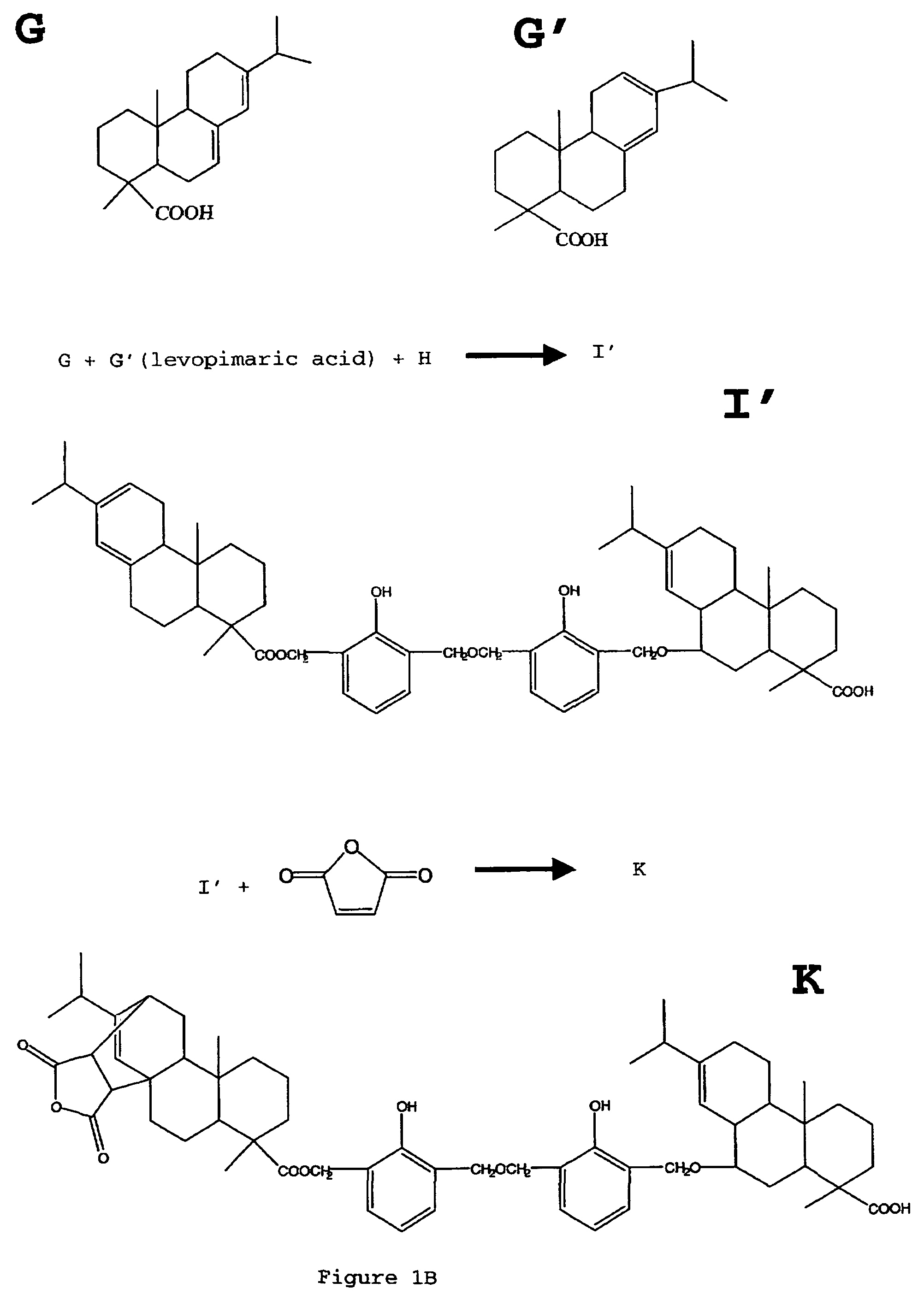Well bore treatment fluid
a treatment fluid and well bore technology, applied in the direction of fluid removal, wellbore/well accessories, chemistry apparatus and processes, etc., can solve the problems of increasing the operating cost associated with disposing of water in an environmentally acceptable manner, increasing the tendency for emulsion formation, and increasing the cost and size of equipment used, so as to reduce the outflow of water
- Summary
- Abstract
- Description
- Claims
- Application Information
AI Technical Summary
Benefits of technology
Problems solved by technology
Method used
Image
Examples
example 1
Preparation of Divalent Metal Carboxylate Salt, (R1COO)2M, from Corresponding α-Branched Saturated Carboxylic Acid
[0203]The synthetic α-branched saturated carboxylic acids, neo-C9H19COOH, neo-C12H25COOH and the neo-C9H19COOH / neo-C17H35COOH mixture are converted to divalent metal carboxylate salts by the following procedure. 500 mL of a 2 mol / L aqueous solution of NaOH is mixed with 200 mL deionised water in a 2 L beaker. Whilst continuously stirring the solution, 1 mole of the α-branched carboxylic acid (e.g. 172.3 g (189.1 mL) VERSATIC™ 10) is slowly added and then the volume of the solution is made up to 1 liter using deionised water. At this point, if necessary, the pH is adjusted to a value in the range 9-9.5. In this pH range, the solution should be clear as all the water-insoluble carboxylic acid has been converted to carboxylate anion:
R1COOH+NaOH(aq)⇄R1COO−(aq)+Na+(aq)+H2O
[0204]If the pH of the aqueous solution of sodium carboxylate exceeds the stated range, Ca(OH)2 will be c...
example 2
Water, Oil and Solvent Solubilities
[0208]Table 1 compares the solubility (at T=25° C.) of a range of compounds in brine, several different oils and in a range of glycol ethers and alcohols. Solubility was assessed by (i) preparing a series of mixtures containing various concentrations of the compound in brine, oil or solvent in 100 mL bottles, (ii) heating and equilibrating the mixtures at 60° C., (iii) cooling to 25° C. and (iv) visually inspecting any residual material; if an insoluble residue is observed, this was filtered out from the solution and its weight is determined.
[0209]For the case of abietic acid, calcium abietate (Dertocal), polymerised calcium abietate (MERIGRAL™) and the phenolic modified resins (RESENOL™ and GRANOLITE™), insoluble residues were removed by filtration and the numbers given in Table 1 relate to the soluble fraction after filtration.
[0210]
TABLE 1Solubility of various calcium carboxylate salts inbrine, oils and various solventsBrine(1)OilSolventCompound...
example 3
Selective Response of Solvent-Based Calcium Carboxylate Solutions to Additions of Oil or Brine
[0219]In well-mixed bottle tests, the solvent-based solutions of calcium salts of α-branched carboxylic acids show a selective response to increasing dilution with oil or brine. When oil is mixed with the solvent-based solution, the calcium carboxylate salt remains in solution and the mixture forms one or two clear phases depending on the miscibility of the solvent with the oil and the degree of dilution by oil. When a critical concentration of brine is mixed with the solvent-based solution, the calcium carboxylate forms an oil-soluble water-insoluble waxy precipitate and again the mixture may form two separate liquid phases depending on the miscibility of the solvent with the brine and the degree of dilution by brine. Thus, such a selective treatment fluid is expected to allow the flow of oil but to restrict the flow of water due to the selective precipitation of a flow-resistant waxy soli...
PUM
| Property | Measurement | Unit |
|---|---|---|
| melting point | aaaaa | aaaaa |
| melting point | aaaaa | aaaaa |
| water permeability | aaaaa | aaaaa |
Abstract
Description
Claims
Application Information
 Login to View More
Login to View More - R&D
- Intellectual Property
- Life Sciences
- Materials
- Tech Scout
- Unparalleled Data Quality
- Higher Quality Content
- 60% Fewer Hallucinations
Browse by: Latest US Patents, China's latest patents, Technical Efficacy Thesaurus, Application Domain, Technology Topic, Popular Technical Reports.
© 2025 PatSnap. All rights reserved.Legal|Privacy policy|Modern Slavery Act Transparency Statement|Sitemap|About US| Contact US: help@patsnap.com



